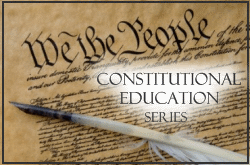Worldview - Part 1 - Introduction (this post)
Worldview - Part 2 - Cat Murder - Ethics and Truth
Worldview - Part 3 - Sacred and Secular
Worldview - Part 4 - Mixing Politics With Religion
Worldview - Part 5 - Secular Humanist Theology
Worldview - Part 6 - Marxist Theology
Worldview - Part 7 - New Age (Cosmic Humanist) Theology
Worldview - Part 8 - Christian Theology
Worldview - Part 9 - Secular Humanist Ethics
Worldview - Part 10 - Marxist/Leninist Ethics
Worldview - Part 11 - New Age (Cosmic Humanist) Ethics
Worldview - Part 12 - Christian Ethics
***
If you are interested in portions, or all of this twelve part series taught in an engaging, educational fashion, please contact Alan at Banyan Concepts.
***
While teaching a Sunday morning class at church on the topic of various worldviews, I plan to share some of the more significant findings which our class is learning. The main text for the study is The Battle for Truth by David Noebel. A good deal of this class is also based on personal research.
A worldview is an acquired and developed “filter” which each person possesses (whether they want to or not). Each person’s worldview may be slightly different, but it is this filter which determines how we view most everything that we experience. When we read the newspaper, our worldview determines how we interpret data and articles, and is the driving force behind the formulation of our own opinions on almost every subject. In our class, we will touch on four different worldviews (though there are more than this which could be considered) – 1) the Christian worldview, 2) the Secular Humanist worldview, 3) the Marxist/Leninist worldview, and 4) the Cosmic Humanist (or New Age) worldview.
Consider this example – Saint Peter reads an article in the newspaper about new abortion rights being granted to mothers and is horrified at the prospect. This rails against his perspective that all life is sacred and should be preserved. Madonna (the singer, not the painting) reads the exact same article and is filled with satisfaction that the universe has reached a new level of progressive achievement. How can two people read the very same article and yet come away with such radically different conclusions? It all has to do with the worldview that they possess.
This subject is timely. The Christian worldview has largely been removed from the public square, and is even condemned at times by our own laws and practices. But our nation did not start out this way. Consider these words from some of our founding fathers:
“Whoever will introduce into public affairs the principles of Christianity will change the face of the world.” – Benjamin Franklin
“It cannot be emphasized too strongly or too often that this great nation was founded not by religionists, but by Christians; not on religion, but on the gospel of Jesus Christ.” – Patrick Henry
“We have staked the whole future of American civilization not on the power of government, far from it. We have staked the future of all of our political institutions upon the capacity of each and all of us to govern ourselves according to the Ten Commandments of God.” – James Madison, fourth President of the United States
“The highest glory of the American Revolution was this: that it tied together in one indissoluble bond, the principles of civil government with the principles of Christianity.” – John Quincy Adams, sixth President of the United States
“God has given to our people the choice of their rulers, and it is the duty, as well as the privilege and interest of our Christian nation, to select and prefer Christians for their rulers” – John Jay, first Chief Justice of the Supreme Court
Can we imagine a politician or Supreme Court justice uttering these words today? Clearly, the worldview lens at the political level has changed in the last two hundred years.
There is much to support a Christian worldview. The idea of a soul is engendered in many other worldviews, including that of New Age supporters, but it is often not thought of as a “real” item to possess, but as more of an ethereal concept. Consider these words from Alexander Solzhenitsyn:
“There is a disaster…which has already been under way for quite some time. I am referring to the calamity of a despiritualized and irreligious humanistic consciousness. If humanism were right in declaring that man is born to be happy, he would not be born to die. Since his body is doomed to die, his task on earth evidently must be of a more spiritual nature.”
Throughout this class, I will reveal several articles of faith to be declared emphatically as elements of a Christian worldview. The first is this:
THERE IS ONLY ONE TRUTH
Once we arrive at the understanding that truth is not different for each individual (a common misperception in the New Age arena), it drives us to seek and understand what this truth is. This element is not an easy one for many people to accept. Many professing Christians will falter on this issue as they unintentionally compromise their belief or their moral position in order to be more accepted by others, and so live to fight another day. But this concept is one that must be adhered to if one is to successfully defend the ideal of Christian Theism.
To Worldview - Part 2 - Cat Murder - Ethics and Truth











2 comments:
Your best post yet.
Whoa, what happened? My earlier comment was for the post on grace. The "Worldview Class--Part 1" is great too, though!
Post a Comment